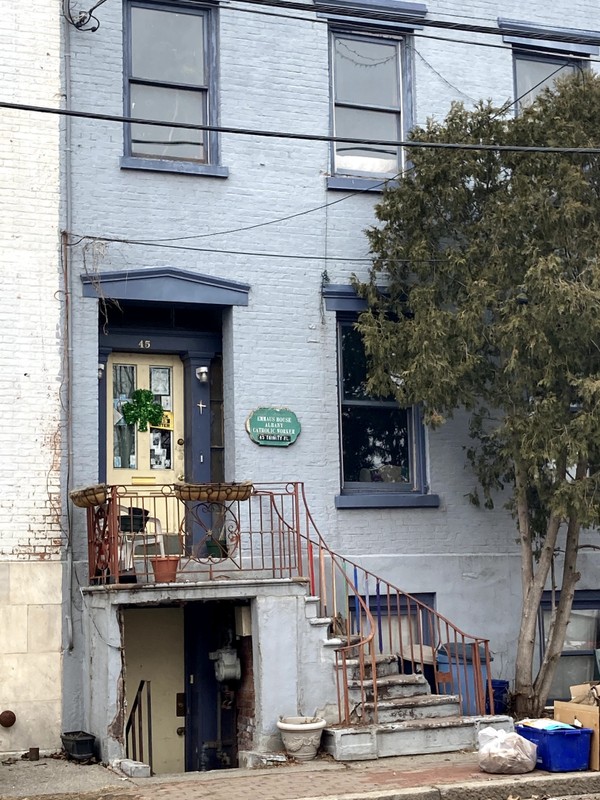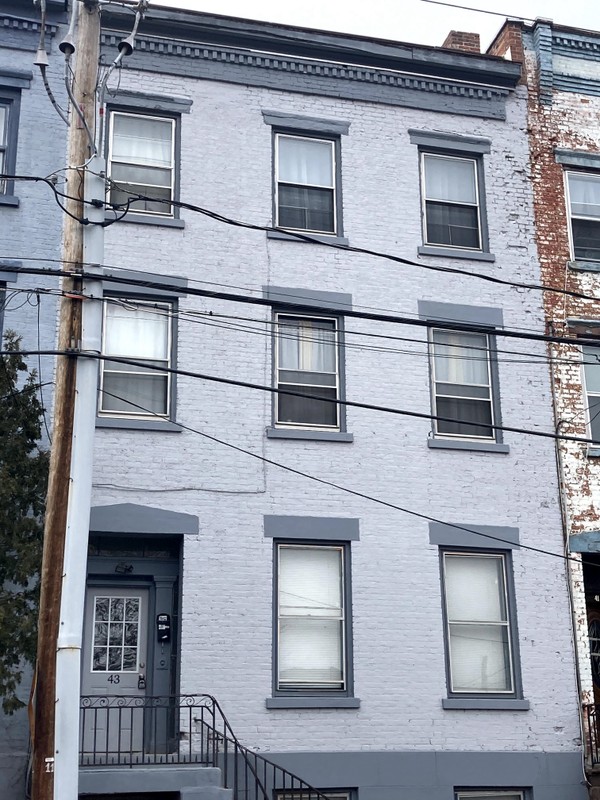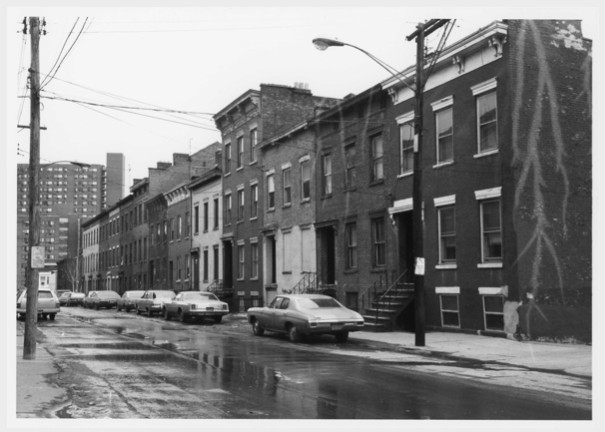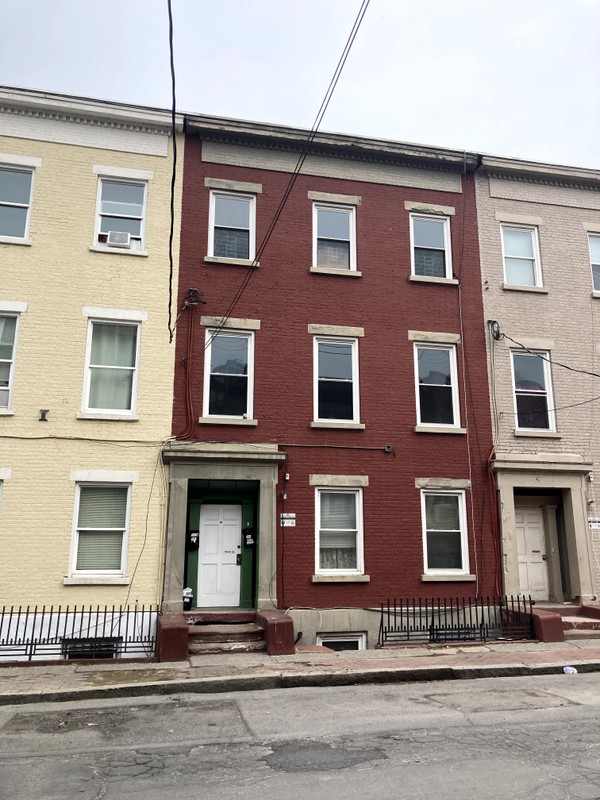16-22 and 39-45 Trinity Place
Introduction
Author-Uploaded Audio
Listen to a narration of this entry's description by Kim Parker .
Text-to-speech Audio
These rowhouses at 39-45 Trinity Place are in the Mansion Historic District of Albany. In conjunction with the prior stop on this tour, 2 Ash Grove Place, these homes were built in 1839-40 by Alexander Gray and his son William. The Grays lived in one of the rowhouses for a brief time before selling it. Although this tour location is pinned in the area of 39-45 Trinity Place, you may also decide to walk north up the street to check out 16-22 Trinity Place. All of these buildings are excellent examples of Greek Revival-inspired architecture with characteristic combinations of cornice lines with dentils and flat frieze, and windows with barely projecting lintels and sills. Additionally, the buildings have recessed entrances framed by pilasters and entablatures. Sometime in the past, these entrances were adorned with transoms and sidelights. Since these homes are in a historic district, they were all added to the State and National Register of Historic Places. The entire Mansion Historic District was listed in 1982.
Images
45-41 Trinity Pl, Present Day

45a-39 Trinity Pl, January 1981

45 Trinity Pl

45 Trinity Pl: note the entranceway

43 Trinity Pl

41 Trinity Pl

39 Trinity Pl

20-22 Trinity Pl, Present Day

Looking north towards 16-22 Trinity Pl, January 1981

18 Trinity Pl

16 Trinity Pl

22 Trinity Pl: note the entranceway (16-22 have very similar doorways)

Backstory and Context
Author-Uploaded Audio
Listen to a narration of this entry's description by Kim Parker .
Text-to-speech Audio
Trinity Place was first opened in 1836 under the name Broad Street, later changed to its current name in 1862. The land on both sides of this block of Trinity Place, between Madison Avenue and Westerlo Street, was largely part of the James Kane estate in the early nineteenth century. James Kane was a wealthy merchant who made his money trading in the Mohawk Valley alongside his six brothers. Unfortunately for Kane, he lost his fortune during the Panic of 1819, and his estate was taken over by his creditors.
The property was purchased by Henry Yates and Archibald McIntyre, state politicians, in 1834 before being subdivided on speculation. The east side of the street, where the 16-22 rowhouses stand, was developed mostly during the 1830s-1850s. The west side was developed later, during the decades of the 1840s, 50s, 60s, and 70s. The two sections of rowhouses we are highlighting at this stop were built circa 1839-1840, and sit on opposite sides of the street.
39-45 Trinity Place
The rowhouses at 39-45 Trinity Place (like 2 Ash Grove Place) were built in 1839-1840 by Alexander and William Gray. These men did not simply purchase the property to be later sold, but rather as a residence for their family.
These four homes demonstrate many characteristics typical of Greek Revival architecture. 45 has a recessed entrance with transoms, doric pilasters, and a pediment above the doorway. 43 also has a recessed entrance with square doric pilasters and transoms that surround the door. The sills and lintels are very simple, and the pediment does not project from the facade. 41 also has that recessed entrance with sidelights, but there are no pilasters. It could be concluded that there were once transoms that surrounded the door, but they have now been covered.
41 is unique with its detailed entablature, unlike 45, 43, and 39, which have a denticulated cornice and wide flat frieze band. Notice how both 43 and 39 interestingly do not have uniform lintels as their third-floor lintels are different from the other floors. Though the windows of these buildings have been modernized and replaced, the original window fixtures were of 6/6 sash design.
16-22 Trinity Place
The buildings at 16-22 Trinity Place, built in 1839, were one of the first groups of buildings in the district. This group used to include number 24, which exhibited similar architectural characteristics to the other four homes. Unfortunately, between the district’s listing in 1982 and present-day, 24 Trinity Place was demolished. No other building was put in its place, and it lies as an empty lot to this day.
The four homes that remain are great examples of Greek Revival architecture. Each building has a recessed entrance surrounded by an enframement. Within the recessed entrance, you can see square Doric pilasters. Additionally, the doors are surrounded by transoms on the sides and top.. All of the homes have rectangular sills and lintels that barely project from the brick wall of the facade. The homes also have a denticulated cornice and wide flat frieze band. Just like the other rowhouses on this street, they originally all had 6/6 sash windows that have now been replaced.
Enjoy these Greek Revival rowhouses, and see if you can pick out the different styles of architecture along the street between the two groups!
Sources
Bender, Matthew. Albany Architecture: A Guide to the City. Edited by Diana S. Waite. Albany: Mount Ida Press, 1993. https://books.google.com/books?id=B_M7vlQPa8kC&printsec=frontcover&source=gbs_atb#v=onepage&q&f=false.
New York SP Mansion Historic District, 9/1/1982 [National Register for Historic Places Inventory - Nomination Form]; Records of the National Park Service, 1785-2006, Record Group 79; National Archives at College Park, College Park, MD [online version available through the Archival Research Catalog (ARC identifier 75316269) at https://catalog.archives.gov/id/75316269; February 25, 2021].
New York State Historic Preservation Office. 16 Trinity Pl, Albany NY. CRIS Entry 00140.003650.
New York State Historic Preservation Office. 18 Trinity Pl, Albany NY. CRIS Entry 00140.003651.
New York State Historic Preservation Office. 20 Trinity Pl, Albany NY. CRIS Entry 00140.003652.
New York State Historic Preservation Office. 22 Trinity Pl, Albany NY. CRIS Entry 00140.003653.
New York State Historic Preservation Office. 39 Trinity Pl, Albany NY. CRIS Entry 00140.003644.
New York State Historic Preservation Office. 41 Trinity Pl, Albany NY. CRIS Entry 00140.003645.
New York State Historic Preservation Office. 43 Trinity Pl, Albany NY. CRIS Entry 00140.003646.
New York State Historic Preservation Office. 45 Trinity Pl, Albany NY. CRIS Entry 00140.003658.
Historic Albany Foundation
https://catalog.archives.gov/id/75316269
Historic Albany Foundation
Historic Albany Foundation
Historic Albany Foundation
Historic Albany Foundation
Historic Albany Foundation
Historic Albany Foundation
https://catalog.archives.gov/id/75316269
Historic Albany Foundation
Historic Albany Foundation
Historic Albany Foundation
